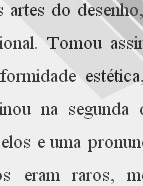

................................
This trend was continued by Father António Dâmaso de Castro e Sousa (Lisbon, 1804 - 1876), who distinguished himself for his oratory and descriptive character and sparse historical criticism. Between 1838 and 1845, he published pamphlets entitled Descrição do Palácio Real na Vila de Sintra [Description of the Royal Palace in the Town of Sintra] , Carta Dirigida a Salústio [Letter to Salustio], Amador de Antiguidades [Amateur of Antiques], Descrição do Real Mosteiro de Belém [Description of the Royal Monastery of Belém], Memória Histórica Sobre a Origem da Fundação do Real Mosteiro de Nossa Senhora da Pena [Historical Memoir on the Origin of the Foundation of the Royal Monastery of Our Lady of Pena], Memória Sobre o Majestoso Quadro que Está na Sacristia do Real Mosteiro de S. Lourenço do Escorial [Memoir on the Majestic Painting in the Sacristy of the Royal Monastery of Saint Lawrence of the Escorial], Vida de Francisco de Holanda [Life of Francisco de Holanda], and Notícia Sobre os Antigos Coches da Casa Real e Itinerário que os Estrangeiros que Vem a Portugal devem Seguir na Observação e Exame dos Edifícios e Monumentos Mais Notáveis deste Reino [Note on the Ancient Carriages of the Royal House and on the Itinerary that Foreigners who Come to Portugal Should Follow when Observing and Examining the Most Remarkable Buildings and Monuments in the Kingdom].
Portuguese art historiography was defined between 1815 and 1845 with Taborda, Cyrillo, Garrett, Cardinal Saraiva and Father Castro e Sousa, but it was clear that none of them regarded themselves as art historians. They were sculptors, painters, writers and scholars who fulfilled a secondary vocation. This was also the case of Francisco Adolfo de Varnhagen (São João de Ipanema, Brazil, 1810 - Vienna, Austria, 1878). This Brazilian diplomat and historian, a graduate in military engineering in Lisbon, who came to prominence for his study of the history of Brazil, authored a key essay on the Mosteiro da Batalha [Monastery of Batalha], the Notícia Histórica e Descritiva do Mosteiro de Belém [Historical and Descriptive Note on the Monastery of Belém], published in 1842 in the journal O Panorama [Panorama] and compiled in a booklet in the same year. Varnhagen's importance was due almost exclusively to this work, despite having authored two notes on the Torre de Belém [Tower of Belém] (1840) and the side portal of the Igreja de São Julião de Setúbal [Church of São Julião de Setúbal] (1843). It was here that he coined the term Manueline, which became an almost obsessive touchstone. The idea that it had been coined by Garrett in 1839 in a note to the poem Camões is wrong, since the term Manueline only appeared in the poem’s 1854 version.
